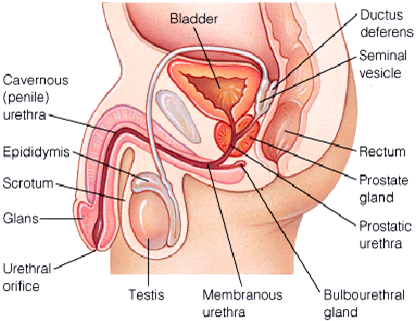Please note: In addressing the topic of sexual assault and arousal, this page uses direct and graphic language relating to sex and genitals, as well as a detailed anatomical diagram. Please prioritise your wellbeing and step away from this page if you find yourself becoming triggered. You can always return to this topic at another time.
Introduction
Developing an erection or ejaculating during a sexually abusive experience can be one of the most confusing and distressing aspects of sexual abuse for men and boys. This page deals with the issue of male sexual assault and arousal. In it we seek to address some of the questions relating to physiological arousal and sexuality that men report struggling with.
Male bodies and arousal
Much of our body – our senses and nerve endings – is basically designed to respond to stimulation, particularly to touch or pressure. In fact, teenage boys especially can be extremely sensitive to touch anywhere on the body, not just around the areas we usually associate with sexual arousal. Having said that, obviously the genitals (meaning the penis and testicles) can be very sensitive, and so can the area around our anus.
Arousal, or the way our body responds to touch, is not always something that can be controlled. Most men (and almost all teenage boys) have had the experience of unwanted or unintentional arousal, for example when riding at the back of a bus or sitting with a cat purring on our lap. Stimulation of the genitals (such as pressure, touching or rubbing) can very easily cause an erection, even when it is not intended or wanted.
The mechanics
The area around the penis, testicles and anus have a rich supply of nerves, which can produce arousal when touched. If sexual assault involves touching around the anus or penetration, it is common for the male body to respond by developing an erection and/or ejaculating.
Pressure on the prostate gland can stimulate arousal. Many people have heard about the prostate from education campaigns about prostate cancer. The prostate gland is located next to the bladder and the seminal vesicles, just past the sphincter muscles of the anus (the opening to the rectum).
If the prostate gland is stimulated it will typically produce an erection (see the diagram below). It is a normal response for the body to also produce seminal fluid when the prostate gland and the seminal vesicles are touched. (In fact, where men have spinal injuries, a technique called ‘electroejaculation’ is used to collect sperm to help their partner conceive. In this procedure, the prostate and other glands and organs are electronically stimulated to achieve an ejaculation.)

Prostate check
To help put this in context, some men may experience involuntary arousal when their doctor performs a digital rectal examination to check for prostate problems. This is a purely physiological reaction. It does not mean in any way that the man is sexually attracted to his doctor, or that he has a sexual preference for doctors in general! In the same way, developing an erection, or ejaculating, during sexual assault does not say anything at all about a person’s sexual preferences or identity.
FYI – if you have been putting off a prostate check out of concern it will involve a physical examination, as many men who have experienced abuse do. There is now an option for a PSA blood test to assess risk of having prostate cancer. PSA stands for prostatic specific antigen. Your GP can request this test as part of general check-up.
Fear can produce an erection
It is worth noting that fear and arousal are very similar in a physiological sense. Both states involve the symptoms of increased heart rate, fast shallow breathing, and increased alertness, to name a few. The combination of fear, arousal, and touch can be overwhelming and confusing. People who commit sexual abuse usually know this, and take advantage of this aroused state.
People who offend work to encourage an erection
People who sexually abuse boys and men often use their knowledge about male bodies to deliberately produce an erection and/or ejaculate to occur. They do this because they know it is extremely confusing and embarrassing. They might also do it to try and convince the person being abused (and also themselves) that what is happening is not really abuse.
People who commit sexual abuse know that if a boy or man is aroused and orgasm, or a girl or woman is aroused and orgasm, they are less likely to tell anyone about the abuse or assault.
Confusion
We normally think of erections and ejaculation as signs of ‘good’ arousal, and a pleasurable experience. Of course, when it is freely chosen, sexual activity can be intensely pleasurable for men; including if it involves some kind of anal penetration or touching. See our companion page on Sexual Intimacy.
However, when sexual contact occurs against someone’s will, or through emotional manipulation or when the person does not understand what is being done to them, it is incredibly confusing and distressing. It can also be physically very painful.
This combination of pain, confusion, and arousal can leave men with powerful feelings of shame and disgust at themselves and their bodies.
When we experience powerful, involuntary physiological sensations (and sexual arousal is a very powerful sensation), it is normal to have a strong reaction and to try and make sense of what is happening the best way we can. Such experiences can lead men to question their sexuality, and ask themselves whether getting an erection or ejaculating meant he really liked it or wanted it. It can feel like their body has betrayed them, and sometimes it can get in the way of enjoying sex.
Questions of sexuality
Following an experience of sexual abuse, some men try to avoid sexual situations altogether. The feelings of arousal can trigger memories of the abuse. Other men, in an effort to ‘reclaim’ their sexuality, may seek out frequent sexual encounters that lack intimacy, and that leave them and/or their sexual partners feeling disconnected and dejected.
Concerns related to sexual arousal can impact upon intimate relationships with their partners, who may not understand why sexual arousal and intimacy is so difficult and fraught with anxiety.
When the person committing the abuse is male, it can leave straight boys and men wondering if they are ‘really’ gay. They might also wonder if the person abusing them somehow knew this. As the information about automatic arousal above shows, this is not the case.
All that arousal can tell us is that the boy’s or man’s body reacted to stimulation in a normal way, and that the person committing the offence, be they male or female, took advantage of their power and knowledge to manipulate and abuse.
For gay men, or men who are sexually attracted to men, there can be confusion around whether the abuse ‘caused’ him to be gay. This is often linked to problematic and homophobic ideas in our society which denigrates same sex attraction and pleasure.
Same-sex attraction or ‘homosexuality’ is sometimes seen as something that needs to be explained, in a way that ‘heterosexuality’ does not. Having been sexually abused is suggested as one such ‘explanation’. No-one asks a woman who is sexually abused by a man, whether she is a ‘heterosexual’ because of the sexual abuse! The fact is that same-sex attraction is part of human sexual diversity and is not caused by sexual abuse.
Confusion is fuelled when we forget that sexual abuse and healthy sexual arousal are very different things. Sexual abuse is a crime committed by one person or group against another. The sexual abuse of children or young people has nothing to do with healthy adult sexuality, no matter what gender or sexual orientation anyone is.
In presenting this information, we don’t mean to suggest that untangling these complex reactions and feelings is easy.
Further conversations
Hopefully having the information on this page has been helpful. Maybe this page has opened the door to conversations with your partner or a counsellor. You may want to ask them to read this page with you if you’re not sure where to start.
Everybody has a right to a healthy and satisfying sex life. One where you feel comfortable and enjoy becoming sexually aroused. Developing a satisfying sex life is possible after sexual abuse. We encourage you to check out our companion page on Sexual Intimacy.
Sources & more info
- Diagram accessed from Burke, K. and LeMone, P. (2008) Medical-Surgical Nursing: Critical Thinking in Client Care. 4th Ed. New Jersey. Pearson Education, Inc. (fig. 49.1).
- Kozier & Erb (2012). Kozier & Erb’s Fundamentals of Nursing: Concepts, Process, and Practice. NJ, Pearson Education, Inc.
- Smith’s General Urology (2008). New York, Lange Medical Books / McGraw-Hill, Medical Publishing Division.


